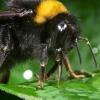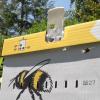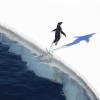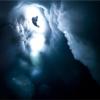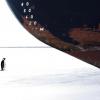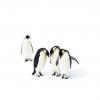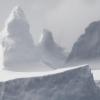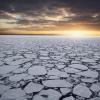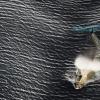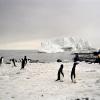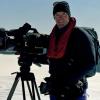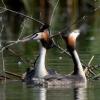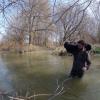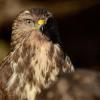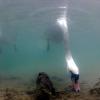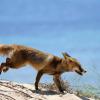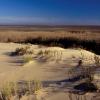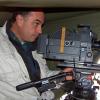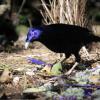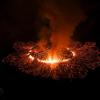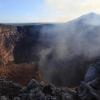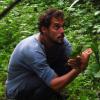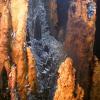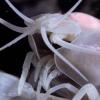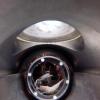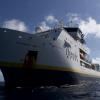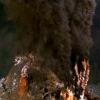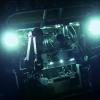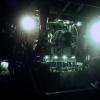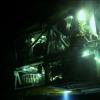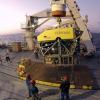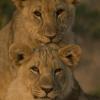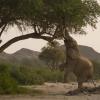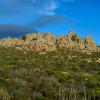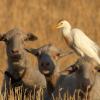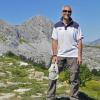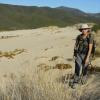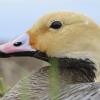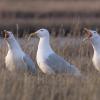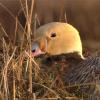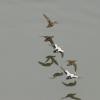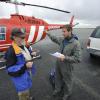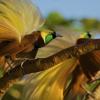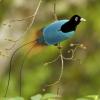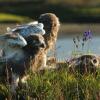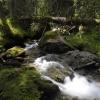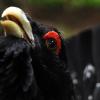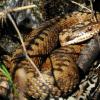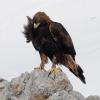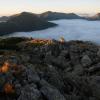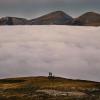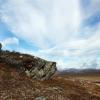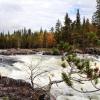They are chubbier, fuzzier and more leisurely than their sisters, the bees. They are a lot less aggressive and awe-inspiring than their cousins the wasps. When early spring brings out the first bumblebees, they bring a smile to our faces. Macro and high speed cinematography allow us to witness their behaviour (they are not too heavy to fly), understand their biology (they do sting, and fur and antifreeze keep them active in the cold), experience their unique abilities and leave us in awe of these droll little harbingers of spring.
Films 2014
First Prize – “Town of Sondrio” Award 2014, Student Jury Award 2014
Hummeln – Bienen im Pelz
Stelvio National Park Award 2014
The Last Ocean
The Ross Sea, in Antarctica, is the most pristine stretch of ocean on Earth. Scientists describe it as our last 'living laboratory', a place that can teach us about the workings of all marine ecosystems. But the fishing industry recently found its way to the Ross Sea, targeting Antarctic toothfish and unless stopped, the natural balance of this unique ecosystem will be lost forever. The Last Ocean follows the race to protect the Ross Sea from our insatiable appetite for fish, and raises the simple ethical question: do we fish Earth’s last untouched ocean or do we protect it?
“Lombardy Region” Award 2014
Vad Szigetköz – A szárazföldi delta
In the Western access areas to Hungary life had speeded up - there are wind-mills, motorways, big cities and industrial parks all over the place. Yet, something is hiding between them. This is an enormous cone-shaped alluvial deposit with tiny villages, forests, and river branches. On one side of this region is today’s Szigetköz. Flowing out of the Alps and Carpathians the Danube River created this land delta unique in Europe. Arriving at the plain the river broke into wide branches where unparalleled fauna developed. These days the river cannot change its course as freely as it used to in the old days. The decisive change came about some twenty years ago with the diversion of the river and the building of the hydroelectric plant of Gabcikovo. Seeing the grip of the built in surroundings the question is obvious: can the fauna preserve its former abundance?
“Achille Berbenni” Award assigned by the Audience Jury 2014
Africa - Kalahari
In Africa’s ancient south west corner two extraordinary deserts sit side by side - the Kalahari and Namib deserts. Water is in short supply, yet these deserts are somehow full of life. In the Kalahari scrublands, clever meerkats are outsmarted by a wily bird, solitary and belligerent black rhinos get together to party and giant insects stalk huge flocks of birds. Rain almost never falls in the Namib – instead it must make do with vaporous, vanishing fog. The creatures in this, the world’s oldest desert, have gone to the extremes, as spiders wheel to escape and a desert giraffe fights to defend his scant resources in the greatest giraffe battle ever filmed.
Guadalquivir – The Great River
A grandiose river in Southern Spain flows through Andalusia from North to South, like a huge artery that stretches along 600 kilometers. From its birthplace, in the Cazorla mountains, all the way to the mouth of the river, that reaches the shores of Doñana National Park, a fox will become the story’s main character. Through its eyes, we will come to discover the spectacular biodiversity that this little creature finds along the way.
Australien – In den Wäldern der Koalas
The eucalyptus forests of Eastern Australia are famous, both for flavouring throat sweats and as home to cuddly looking koalas. Dramatic footage will reveal their vast scale and surprising diversity, with towering mountains breaking the canopy and stunning waterways flowing beneath. Journey into the forest and a fascinating array of unique species can be discovered, from the lyrebird that rips off the calls of other birds, to the bowerbird who takes great care to construct a love-nest hoping to attract a mate. It’s not easy though, rivals always seize the chance to destroy his hard work.
Pride
The documentary explores the cultural relationship between residents of Gujarat, India and the last remaining population of Asiatic Lions in the world. With fewer than 50 lions in the wild at the turn of the 20th century, rural communities started working with the government to create a haven for this top predator and are successfully securing its place in the ecosystem.
Le Temple des Phénix
Nicaragua, in the middle of Central America, is home to Masaya; a huge volcano that has been active for over 30,000 years. During its long life it has caused some of the largest eruptions in history. The surrounding landscape has been created from lava, ash and gas while at the centre lies a desolate, empty land. Each time the Masaya volcano destroys everything around it, life returns, re-emerging from the ash at its feet.
Abysses, les alliances des profondeurs
The “Pourquoi Pas?”, France’s largest oceanographic ship, began a mission of the greatest importance in the summer of 2013. The ‘Biobaz Mission’ will in effect allow the 30 international scientists on board to back up their latest hypothesis that bacteria play an essential role in the survival of underwater animal species living on the volcanoes found at great depths in the ocean. This mutual aid between animals and bacteria throws into question certain fundamental theses that have held sway on the evolution of living creatures up until now.
Namibia – Flüsse aus Sand
Dust and dunes, sun and sand: the parched landscapes of Namibia in southwest Africa are extreme in every way. This Terra Mater Factual Studios production tells the fascinating story of how the largest animals on our planet survive in the oldest and most inhospitable desert on earth. Ephemeral rivers support a stunning diversity of mega fauna in Namibia’s arid areas: elephants as well as giraffes, baboons, antelopes and lions.
Lettera dalla Sardegna
Un uomo, suo padre e la terra bellissima e aspra delle origini … la Sardegna. Tre entità legate da un amore difficile e contrastato che l’uomo ritrova nel viaggio che compie attraverso l'isola. Durante il ritorno al porto di imbarco, a bordo di un treno a vapore ancora in servizio, l’uomo ricorda ciò che ha visto e ne scrive al padre. La struggente bellezza dei luoghi naturali visitati ristabilisce un legame tra generazioni e con le proprie radici che appariva perduto.
Alaska’s Yukon Delta Wildlife Refuge
Every year birds from around the world migrate to the Yukon Delta to nest and raise their young. The number of birds and diversity of species that annually visit the refuge is without equal elsewhere on the globe. It is truly one of the world’s most important sites for migratory birds.
Paradise Found
Tim Laman and Edwin Scholes have spent nearly a decade documenting the 39 species of birds-of-paradise that live in Papua New Guinea. The birds - which are both gorgeous and silly - prove to be elusive prey for the cameras of Laman and Scholes, but, as usual, the adventure is as much about the journey as it is the destination.
The Delta
River Lena begins as a rivulet from a tiny lake. It passes 4,400 km through the entirety of Siberia, moving south to north, to reach the ice-cold Arctic ocean. For millions of years, the river has ground and squeezed by the rocky river banks, carrying along sand and gravel to form the largest delta in the Arctic. The border between land and water is constantly changing. Distributaries and islands appear and disappear faster than cartographers are able to draw new maps: the reason why the region is called the Land of Disappearing Islands.
Nockberge
The Nock Mountains are - geologically – Austria’s oldest landscape. For a hundred million years, the land around them has risen and fallen, while the mountains themselves hardly moved. And for the past thousand years, the same has been true for the harmonious co-existence of wild nature and rural culture. Traditional farming and, more recently, a National Biosphere Park, have kept out the mass tourism that blighted other Alpine regions.
Laponia - Nature and Natives
Laponia represents a rare example of a positive symbiosis between Man and Nature, and is an inspiring model of sustainable life. Situated in the North of Sweden, above the arctic circle, it is simultaneously the greatest and oldest symbol of nature protected in Europe and is one of the four UNESCO World Heritage Sites in the world that represent the landscapes of indigenous peoples. The Sámi are the last indigenous people of Western Europe, this is the story of their deep relationship with nature in Laponia - a story told by the Sámi people and interpreted by the Italian photographer and filmmaker Andrea Barghi, who for over thirty years has been a keen traveller in these boundless lands.
